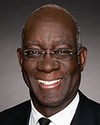I can simply tell you that the statistics speak for themselves: 60% of people contribute the maximum amount.
On page 234 of the budget, there are tables on the distribution of people according to age.
Evidence of meeting #82 for Finance in the 41st Parliament, 2nd session. (The original version is on Parliament’s site, as are the minutes.) The winning word was tfsa.
A recording is available from Parliament.
Director, Personal Income Tax, Tax Policy Branch, Department of Finance
I can simply tell you that the statistics speak for themselves: 60% of people contribute the maximum amount.
On page 234 of the budget, there are tables on the distribution of people according to age.
Director, Personal Income Tax, Tax Policy Branch, Department of Finance
I can also tell you that almost 50% of the people who will benefit from the increase are estimated to have an income under $80,000 a year. That will be the case in 2019.
Liberal

Emmanuel Dubourg Liberal Bourassa, QC
Thank you for this information.
I don't think I have a lot of time left, but I would still like to address another issue very quickly.
In terms of charitable organizations, the Income Tax Act uses the term “qualified donee”. Why have foreign charitable foundations been excluded from the definition of “qualified donee”?
Director, Personal Income Tax, Tax Policy Branch, Department of Finance
Let me give you a little background on that.
In 2012, we changed the approach used by the government to designate foreign organizations as charitable organizations by adding some conditions. Yes, a state donation is needed. In addition, the charitable organization must carry out certain activities.
If you don't mind, I will continue in English.
That's just for disaster relief or humanitarian aid, or if it's in the national interest of Canada.
What this provision does in this budget is it extends these rules not only to what we refer to as charitable organizations but also charitable foundations. This is to add flexibility, because in an international context, for instance, it may be a bit more difficult to determine the nuance, the distinction. It gives more flexibility and it allows what would be considered a foundation under our rules here to still qualify if all the other conditions are met. That's basically the purpose of this provision.
Conservative

The Chair Conservative James Rajotte
Thank you.
Thank you, Mr. Dubourg.
Mr. Dionne Labelle, you now have the floor.
NDP

Pierre Dionne Labelle NDP Rivière-du-Nord, QC
Thank you, Mr. Chair.
Welcome, Mr. Jovanovic.
I would like to talk about the RRIFs.
We see that the minimum retirement rate will go from 7.38% to 5.28%. How was this 5.28% rate established? What foundations and indicators are we looking at?
Director, Personal Income Tax, Tax Policy Branch, Department of Finance
It is simply a calculation of the actuarial values, but it is slightly less complicated than that. It is based on the person's age.
Suppose that you are 75 years old and that you are counting on using all your funds by the time you turn 100. If, every year, you expect to have a 5% rate of return on your investment and you want to escalate your pension by 2% a year, you will therefore need to withdraw an amount this year with the age of 75 in mind. That calculation is basically done every year.
NDP
Director, Personal Income Tax, Tax Policy Branch, Department of Finance
We are anticipating a nominal 5% rate of return and a 2% escalator.
NDP
Director, Personal Income Tax, Tax Policy Branch, Department of Finance
We are basing it on a more recent analysis on the historic rates of return in the medium and long term.
NDP

Pierre Dionne Labelle NDP Rivière-du-Nord, QC
It is a very good thing that the new benefits for veterans are not taxable, but other incomes are taxables. What is the logic behind taxing some sources of income and not others? For instance, the earnings loss benefit and the permanent impairment allowance are taxable, but the two new allowances will not be taxable. What is the logic behind that?
Director, Personal Income Tax, Tax Policy Branch, Department of Finance
Generally speaking, if an allowance seems to replace an income, it will be taxable. If it is related to a one-time event, such as disability-related compensation, it might not be taxable.
NDP

Pierre Dionne Labelle NDP Rivière-du-Nord, QC
I have another question about the numbers you presented. I'm wondering about the child care benefit increasing from $1,200 to $1,920. What is that increase based on?
Director, Personal Income Tax, Tax Policy Branch, Department of Finance
That figure reflects the new amount of the improved benefit for children under six years old.
NDP

Pierre Dionne Labelle NDP Rivière-du-Nord, QC
Was it calculated on the basis of day care needs? How many places in day cares will this measure create? Did you analyze the impact on day care places?
Director, Personal Income Tax, Tax Policy Branch, Department of Finance
The objective of the universal child care benefit was not to create day care places.
Conservative

The Chair Conservative James Rajotte
We're just doing part 1 for this session and then we'll move to part 2.
NDP

Pierre Dionne Labelle NDP Rivière-du-Nord, QC
Okay. Excuse me, Mr. Chair.
Were there discussions with your provincial counterparts on the medium- and long-term impact of TFSAs in terms of lost taxes? It has been said that, by 2080, the provinces will lose $39 billion. Did you discuss that with your provincial counterparts? Were there discussions between officials about that?
Director, Personal Income Tax, Tax Policy Branch, Department of Finance
The Minister of Finance communicates with provincial representatives on an ongoing basis. We frequently meet with our provincial counterparts.
Director, Personal Income Tax, Tax Policy Branch, Department of Finance
You would have to ask the provinces how their taxes are collected.